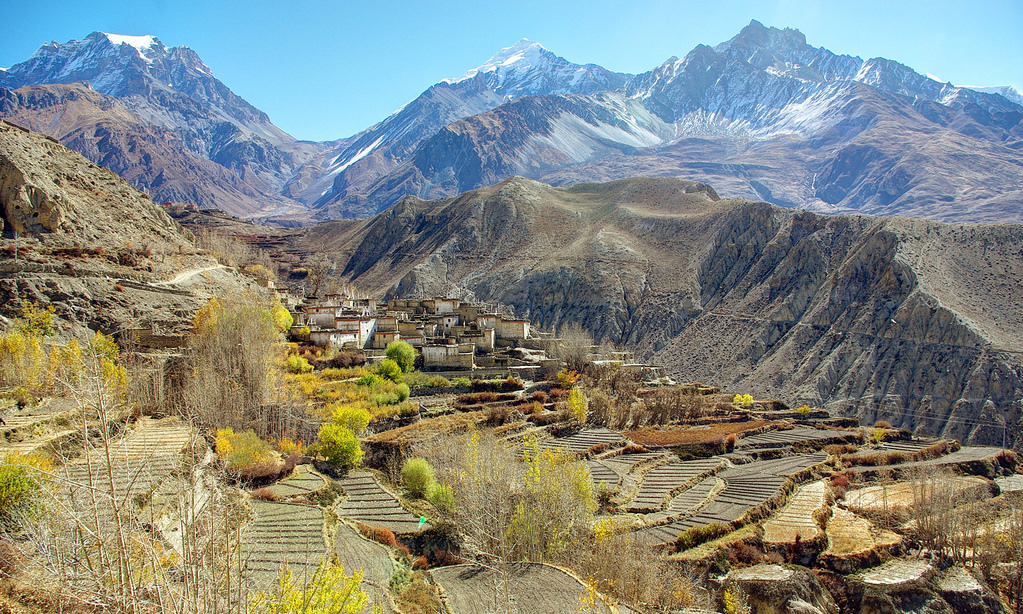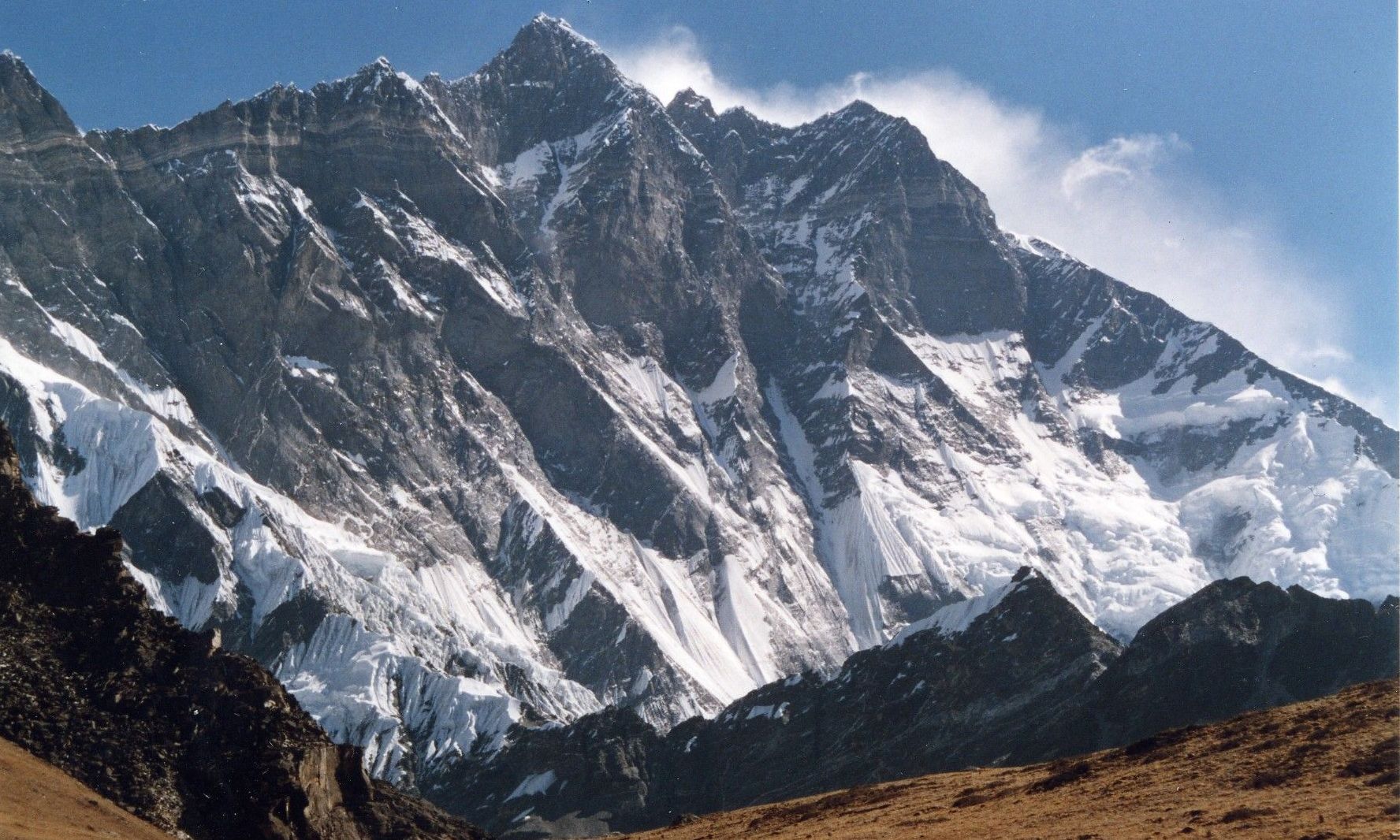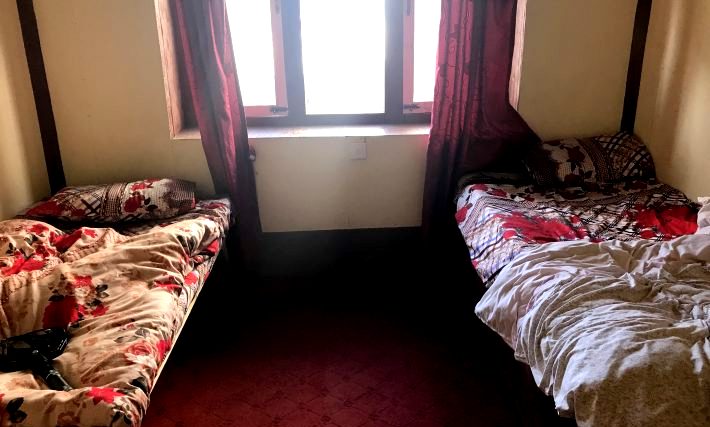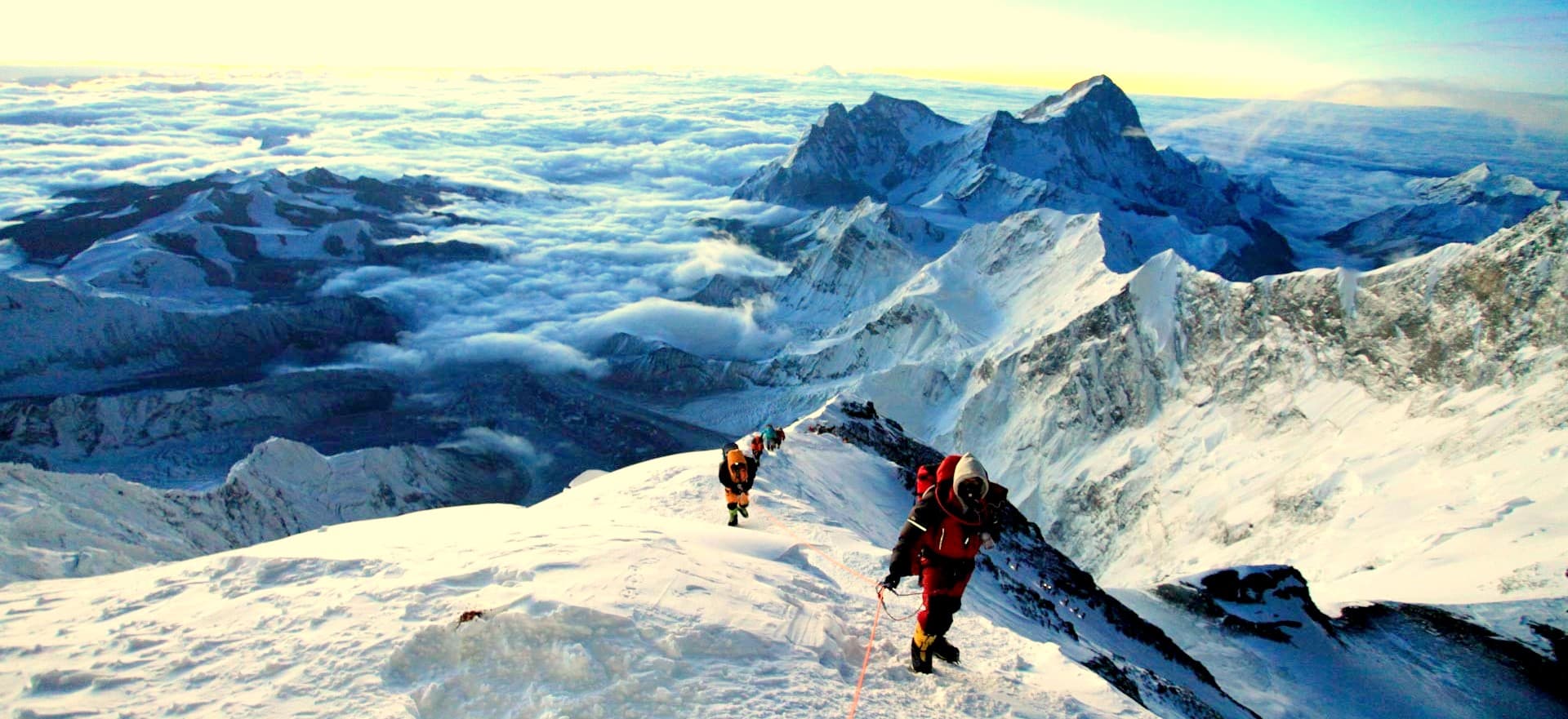Things you should know before climbing peak in Nepal
Why Nepal for Peak Climbing?
Nepal often hailed as the "Land of the Himalayas," stands out prominently on the global map, primarily for its unparalleled natural splendor and towering wonders. With eight of the world's ten highest summits, including the iconic Mt. Everest – the world's zenith at 8,848.86 meters – Nepal's reputation in the realms of mountaineering and peak climbing is both historic and well-deserved.
But beyond these giant sentinels, Nepal's vast topography boasts over 1,300 peaks soaring above 5,500 meters. These, combined with the country's unique cultural tapestry, weave a magnetic pull for adventure aficionados worldwide. While Nepal is home to some of mountaineering's most celebrated summits, it also presents opportunities for climbers of varying experiences. An impressive 326 peaks stand open for expeditions, and an additional 33, often referred to as the "Trekking Peaks in Nepal," cater to those seeking challenges minus the extreme altitudes.

The distinction between Nepal and other mountainous nations lies in its unparalleled offering of majestic climbs. Here, peak climbing transcends being just an activity – it's a profound journey, a dance between passion and profession, offering climbers an unparalleled sense of achievement. Whether one seeks the thrill of ascension or the spiritual embrace of the Himalayan expanse, Nepal provides a haven for both.
Embarking on a Himalayan adventure in Nepal is not just about conquering heights; it's an invitation to immerse oneself in a captivating culture, resonate with tales of human endurance, and experience the indomitable spirit of the mountains. And as every mountaineer will attest, there's an incomparable euphoria that stems from scaling Nepal's peaks, a triumph that remains etched in one's soul forever.
How can one do peak climbing in Nepal?
Peak climbing in the Himalayan expanse of Nepal offers an unrivaled blend of thrill and challenge. Tackling the towering summits isn't just about the altitude; it's a test of one's physical endurance and mental tenacity. While the allure of the mountains is undeniable, preparing adequately for such an expedition is imperative.
- Physical and Mental Preparedness: Climbing in Nepal's challenging terrains demands both physical stamina and mental fortitude. Before setting sights on a summit, it's crucial to undergo rigorous training and conditioning to acclimatize to the demanding conditions.
- Guidance is Essential: The unpredictable nature of the mountains means it's vital to have a seasoned climbing guide by your side. Their experience and knowledge can be instrumental in navigating challenging routes and ensuring safety.
- Equip Yourself: Proper gear can make or break your climbing experience. While some opt to bring their own equipment, cities like Kathmandu and Pokhara offer rental services where climbers can procure essential gear tailored to their expedition's requirements.
- Necessary Permits: Climbing peaks that soar above 6,000 meters or those that demand technical prowess require official permits. To secure these, one must collaborate with a trekking company affiliated with the Nepal Mountaineering Association (NMA).
Engaging in peak climbing in Nepal is as much about the journey as the destination. With the right preparations, guidance from Luxury Holiday Nepal, and respect for the mountains, climbers can expect an experience that's both exhilarating and enriching.
Best season for peak climbing in Nepal
Nepal, often hailed as the "Land of the Himalayas", offers distinct climbing seasons, each with its unique characteristics and challenges. Knowing the weather intricacies can significantly enhance your climbing experience.
Spring (March to May)
Temperature: Ranges from 16°C to 23°C at lower elevations and between -8°C to 10°C at higher altitudes.
Highlights:
- The most popular season for peak climbing.
- Rhododendron forests in full bloom.
- Stable weather with clear skies, offering majestic views of the Nepalese Himalayas.
- Optimal time for capturing photographs.
Early Autumn (September to November)
Temperature: Varies from 10°C to 15°C at lower elevations and can drop between -10°C and 5°C at higher altitudes.
Highlights:
- Second most favored climbing season.
- Minimal rainfall with clear and crisp skies.
- Magnificent panoramas of snow-capped peaks.
- Forests adorned in autumn colors.

Summer (June to August)
Temperature: Hovers around 23°C to 25°C at lower altitudes and 5°C to 15°C in elevated regions.
Highlights:
- Also known as the monsoon season in Nepal.
- Lush landscapes due to frequent rain.
- Fewer crowds, offering a solitary experience.
- Some regions, like Mustang and Dolpo, remain rain-shadowed, making them ideal for treks.
Winter (December to February)
Temperature: Approximately 9°C to 12°C in lower areas, plunging to -20°C to -5°C in high-altitude zones.
Highlights:
- Suited for seasoned climbers seeking challenging expeditions.
- Snow-covered landscapes are visually stunning.
- Higher risk of avalanches and harsh weather conditions.
- Essential to be equipped with specialized gear and thorough technical training.
In every season, Luxury Holiday Nepal ensures to offer climbers tailored programs to optimize their adventure. Ensuring safety and providing authentic experiences is at the heart of what we do. Whether you're considering peak climbing or seeking information about specific regions, feel free to get in touch with our experts.
The Intricacies and Challenges of Peak Climbing in Nepal
Peak climbing in the diverse terrains of Nepal encapsulates a blend of exhilarating adventure and inherent challenges, rendering it a distinctive experience for adventurers. These climbing quests range from those that accommodate novices in the mountaineering domain to trails that demand adept skill and endurance from seasoned climbers.
Encompassing Opportunities for All
Nepal, a haven for mountaineering aficionados, unfolds opportunities for every climber, regardless of their expertise. The peaks over 6,000 meters, such as Mera and Island Peak, are often sought after by beginners and intermediate climbers due to their comparatively moderate difficulty and minimal technical demands. Whereas the titans over 8,000 meters, including Everest, Lhotse, Dhaulagiri, and Manaslu, tend to attract climbers with a seasoned portfolio in mountaineering, owing to their technical rigors and physical demands.

Categories of Peaks in Nepal
The Nepal Mountaineering Association (NMA) has demarcated the peaks into diverse categories to assist climbers in aligning their adventures with their proficiency and desires:
- Trekking Peaks: These peaks offer a moderate challenge, intertwining the adventure of trekking with a spice of mountaineering, yet without requiring an advanced technical skill set in climbing. This category is tailored for those looking to step beyond trekking and immerse into the elementary realm of mountaineering.
- Expedition Peaks: Peaks in this category pose a substantive challenge and require climbers to harness advanced technical skills and sustain high endurance levels. Navigating through these peaks involves negotiating with steep, icy slopes, crevasses, and potentially, through the dreaded Death Zone above 8,000 meters.
A Tapestry of Challenges
- The difficulties experienced during peak climbing in Nepal emanate not merely from the physical and technical aspects but also from factors like altitude, weather, and acclimatization. Thus, whether one is a neophyte explorer eager to dabble in the thrill of reaching a summit or a seasoned climber, aspiring to conquer yet another towering giant, an understanding of the challenges and judicious preparation is pivotal.
While the plethora of options available in Nepal provides a unique canvas for every mountaineer to paint their adventures, Luxury Holiday Nepal tailors experiences that seamlessly blend adventure with safety, ensuring that every climber, from a novice to an expert, experiences the magnificence of the Himalayas in a manner that resonates with their aspirations and capabilities.
Food and Accommodation during peak climbing
Embarking on a peak climbing adventure in the grandeur of the Himalayan Region requires meticulous preparation, especially when it comes to food and accommodation. Ensuring adequate sustenance and a comfortable resting place is crucial to your overall experience and safety.
Accommodation Dynamics
Tea Houses and Lodges: Strategically scattered along the trekking trails, these establishments offer basic lodging facilities and give trekkers an opportunity to relish authentic Nepali cuisine. They are the epitome of Nepalese hospitality, where warmth exudes in the midst of freezing temperatures.
Homestays: For those keen on immersing in local culture and traditions, rural homestays provide a genuine and intimate experience. It's more than just an accommodation; it's about bonding and understanding the local way of life.
Tent Camping: As you ascend closer to the peak, tented camps become a common mode of accommodation. Whether it's at the mountain's base or during the climb, tented camps offer a direct communion with nature. While some might see it as roughing it out, many cherish these moments under the vast starlit sky.
Preparation: Regardless of where you choose to rest, carrying a good quality sleeping bag is imperative. The Himalayan nights can be bone-chilling, and a warm sleeping bag becomes your best companion.

Nutritional Needs
Peak climbing is energy-intensive, making nutrition paramount. Here's a snapshot of a balanced diet for climbers:
Carbohydrates: Constitute the bulk of your meal. Foods like rice, noodles, chapatis, and bread are easily digestible and fuel your body with the required energy.
Proteins and Fats: Essential for muscle repair and energy. Incorporate butter, meat, beans, tofu, and unsaturated fats in your diet.
Ready-to-Eat Meals: A boon for climbers, these meals are not just convenient but can be lifesavers in challenging conditions. Their longevity ensures they remain consumable throughout the journey.
Hydration: Maintaining regular hydration is crucial. Physical exertion demands an increased water intake to ensure the body functions optimally and to keep the digestive systems regular.
While the Himalayas challenge you with their majestic heights, having a structured food and accommodation plan ensures you conquer these challenges with vigor and vitality. Remember, an adventure is best enjoyed when well-prepared, and Luxury Holiday Nepal is here to assist and ensure your journey is both memorable and comfortable
Permit required for Peak Climbing
Nepal, often referred to as the 'Roof of the World', beckons mountaineers from every corner of the globe. However, before embarking on this thrilling expedition, it's essential to be well-versed in the administrative aspect, primarily the necessary permits.
Understanding Peak Climbing Permits:
- Mandatory Requirement: To legally climb mountains in Nepal, particularly those above 5,000 meters, a peak climbing permit is mandatory. This encompasses both the renowned summits and lesser-known peaks.
- Fee Structure: The cost of these permits varies. Factors influencing the price include the specific mountain you intend to climb, the season in which you're climbing, and the size of the expedition team. Peaks falling under the Nepal Mountaineering Association (NMA) have a distinct fee structure that fluctuates as per these factors.
- Legal Implications: Climbing without a permit isn't merely an oversight; it's an offense. Regular checkpoints manned by police and park rangers ensure trekkers have the required permits. Failing to produce one will not only double the permit cost but might also invite legal action.
Types of Permits:
- Conservation Area or National Park Permit: This is essential for treks and climbs situated within specific protected regions.
- Trekkers Information Management System (TIMS) Card: A tracking system for the safety of trekkers, this card is obligatory.
- Restricted Area Permit: If your peak of interest lies in a restricted zone, you'll need both a climbing permit and this additional permit.
Procurement: Typically, the onus of obtaining these permits falls on your trekking agency. It's crucial to choose an agency, like Luxury Holiday Nepal, that is well-acquainted with the permit procedures to ensure a seamless process.
While the allure of the Himalayan peaks is irresistibly compelling, it's pivotal to navigate the bureaucratic landscape efficiently. Being well-informed and prepared with the correct permits not only ensures legal compliance but also paves the way for a hassle-free and memorable climbing experience.
Here is the royalty that foreign climbers have to pay for climbing permits in Nepal:
| S.N | Mountain Name | Spring Season | Autumn Season | Winter/Summer |
| 1 | 7501m.-7999m Peaks Climb. | $600 | $300 | $150 |
| 2 | 7000m. – 7500m Peaks Climb. | $500 | $250 | $125 |
| 3 | 6501m - 6999m peaks climb. | $400 | $200 | $100 |
| 4 | Mt. Amadablam (6812M) | $400 | $400 | $200 |
| 5 | Less than 6500m Peaks Climb. | $250 | $125 | $70 |
Safety precautions and tips for peak climbing in Nepal
Even if you follow all the guidelines, arriving at a high elevation for the first time could be a bit of a shock to the system. Even the simple act of walking uphill requires a lot of energy when you're at 5,000 meters above sea level. It's crucial to stick to your acclimatization plan's "300-meter-a-day recommendation" to avoid altitude sickness and give your body time to adjust. The two things that most trekking companies miss but that ultimately end up being the primary reasons their trips don't go off without a hitch are to add in some buffer time in case the weather is less than perfect. Not every climb that is scheduled into a trek but only lasts a few days will fail altogether. Utilize the ascent and descent as training and acclimatization for a peak adventure.
Here are a few safety issues to take into account when making peak-climbing plans in Nepal.
High Altitude Sickness:
The usual definition of altitude sickness is the adverse effects of high altitude, which are typically brought on by sudden exposure to low oxygen levels at high elevation. Acute mountain sickness is the name for the mildest kind of altitude sickness (AMS). Twelve to twenty-four hours after arriving at high elevations, the first symptoms start to appear. Symptoms of altitude sickness vary depending on their severity. Mild, transient altitude sickness symptoms include lightheadedness, exhaustion, loss of appetite, insomnia, lack of energy, and shortness of breath.
- Vomiting
- Loss of appetite
- Sleeplessness
- Constant headache
- Dizziness, fatigue, lethargy, heavy legs
- Light swelling of hands and feet
- Breathlessness and irregular breathing
- Lesser urine
Prevention
During the trek, taking Diamox tablets helps you avoid altitude sickness. If the effects of the altitude begin to manifest, it will not alleviate the symptoms. Once the signs of sickness appear, there is no other choice than to descend to a lower altitude. Trekking guides on the Himalayan Glacier are highly trained and skilled to assist you in recovering from illness, but you should let them know as soon as it begins to affect you. With decades of mountaineering knowledge, they can identify whether your symptoms are due to altitude sickness or something else entirely. Due to their wilderness first-aid (WFA) training and high level of professionalism, our guides assist medical personnel in times of need.
If you want to trek to Everest base camp without experiencing any problems with altitude sickness, there are a few things to keep in mind. You must first and foremost ascend gradually while getting enough rest and acclimatization. Another way to avoid being sick is to always remain hydrated by drinking lots of water. You must consume a balanced diet and enough food. We always advise not drinking alcohol, smoking, or chewing tobacco throughout the entire walk. Be brave and mentally prepared for the task by working out in the gym or doing cardio-vascular exercises at least three months prior to the trek. This will help your body to handle steep walks.
NOTE: All of the guides at our company are educated and aware of AMS. Managing the effects of higher altitudes is something our knowledgeable staff members are experts at. They can help with basic first aid procedures and are furnished with the required medical equipment. They are, in general, locals who are conversant with safety precautions.
Insurance coverage
Before you travel anywhere in the world be sure your travel insurance covers all of the circumstances and activities that might occur during your climbing or trekking journey. Before confirming your trip, many respectable trekking firms can ask for proof of insurance. Your insurance should pay for the ascent's elevation as well as the ascent itself.
Similarly, insurance must pay for the cost of a chartered medical evacuation and any necessary treatment. You should purchase insurance in your own country, or at the very least, through a Nepali insurance company. It is one of the important steps before traveling to any new place, insurance coverage can help you a lot.
Hiring an expert guide and porter
If you are not accompanied by an experienced guide, do not attempt peak climbing in Nepal. If you intend to hire a guide, find out if he or she has completed the NMA advanced course. This is the absolute minimum need; ideally, you would select a guide who is also licensed by the IFMGA or the UIAGM (Union Internationale des Associations de Guides de Montagnes) (International Federation of Mountain Guides Associations).
No matter which mountain you climb, a skilled guide will always have ropes available in case you encounter any crevasses or extremely steep slopes. Sherpa people/Guides have years of climbing experience and may be found all across Nepal's mountains. The majority of them have spent years climbing peaks around the country and abroad.
Similar to this, our guides are quite adept at allowing safe, simple climbing that lets visitors take in the beauty of the Himalayas. All the guide members are fully certified equipment operators who are also insured. Because of their first-hand experience, local expertise, and sense of humor, they are an excellent asset on climbs.
Porters, who are hired to carry goods along the trail, are a crucial component of the trekking sector. Hiring a porter is a great way to stimulate the tourism sector and offer a new source of income. A porter can transport up to 30–40 kg of your luggage between trailheads so you can climb without the weight.
Tipping cost for guide and porter
The cost of hiring porters and guides varies based on the time of year and the sort of activity. Your heavy suitcases and priceless items are handled throughout the day by the porters without complaint. Many tour guides have dedicated their lives to guiding travelers both inside and outside of the country.
All day long, the porters carry your heavy baggage and priceless stuff without grumbling about being exhausted. Unlike the aforementioned guides, who have all obtained certification and experience through the course of their many climbing journeys.
Well, the advice isn't fixed; it depends on your preferences, and the area of the hike. Climb and trek, and the season. You are free to give however much you like in appreciation for Guide and Porter's assistance. It is typically advised to divide them equally by 10% of the total payments.
Can I perform solo peak climbing in Nepal?
Most climbers prefer to carry their own equipment up the mountain and are keen to try peak climbing in Nepal on their own. This is typically not possible. To make the most of your time on the way and reduce some of the inconveniences of transporting luggage, it is advisable that you utilize at least two porters throughout the business giving your permission.
The biggest benefit of having an experienced mountaineer as a guide—or at the least, a porter-guide who speaks English is that they can help you find your way if you've veered off the main trekking trail. It could be difficult to navigate the Nepalese hills or even find your base camp. The second, even worse justification for hiring a guide is that they can help you in case of any medical emergencies.
If you intend to climb a peak alone, we advise at least hiring a porter or guide. Keep in touch with the trekking party as well.
Luxury Holiday Nepal prides itself on curating unparalleled travel experiences in the heart of the Himalayas. Whether it's breathtaking treks, exhilarating adventure escapades, or immersive cultural tours, we cater to every age group and passion. What's more, our offerings are highly customizable, ensuring that every journey with us is tailored to your unique tastes and desires. Let us make your Nepalese adventure truly unforgettable.
If you need any further information, please contact us by email: [email protected], Phone: +977- 985 100 5129 (WhatsApp)
#Tags
Tripadvisor
5.0928 reviewsGoogle
4.8114 reviewsFacebook
4.1 recommend44 ReviewsTrustpilot
4.1 Great(5 reviews)- Trusted by50K plus traveller




